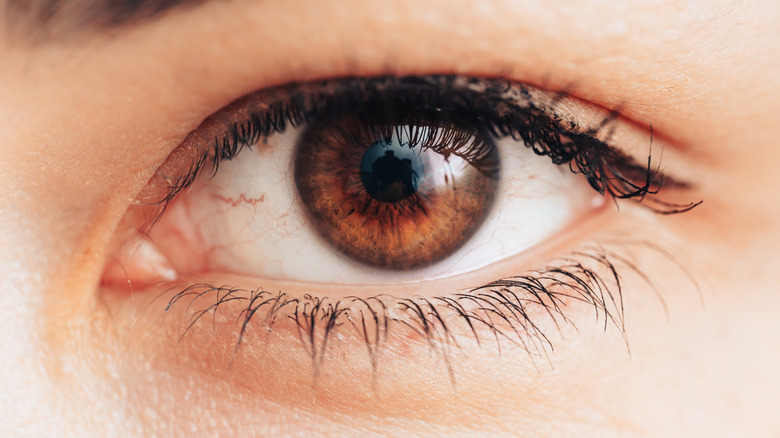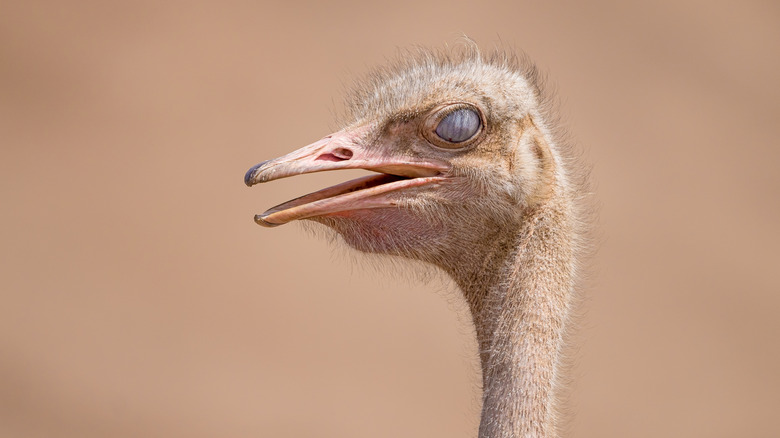The Pink Part Of Your Eye That's Actually Useless
You know that little pink part in the inside corner of your eyeball, right next to the bridge of your nose? It's the kind of feature that you look at all the time without really noticing, but it's actually a fascinating relic of our species' ancient ancestry. The proper term for this pink spot is the plica semilunaris. It is a small fold of conjunctiva, the mucous membrane that covers the whites of your eyes and the inside of each of your eyelids. In humans, the plica semilunaris appears to do nothing, making it a vestigial feature. Vestigial body parts don't exist by accident. They are remnants of previous species on our evolutionary tree, and in the case of the plica semilunaris, nature has given us a clear explanation of its former purpose.
The plica semilunaris is the last surviving remnant of a third eyelid called a nictitating membrane, which lies beneath the outer eyelids. The nictitating membrane is unique from the upper and lower eyelids because it moves across the eye sideways rather than up and down. These third eyelids are a feature of nearly every bird and mammal as well, and we humans are actually outliers in the animal kingdom for lacking them. The only other mammals without nictitating membranes are other primates, with the exception of lemurs and the calabar angwantibo (a member of the loris family). Why have our species' eyes become such an anomaly? It comes down to our way of life.
How we lost our third eyelids
The parts of an animal's eye are connected to that species' lifestyle, like the tapetum lucidum, an adaptation for nocturnal predators. As a species evolves and changes its lifestyle, so too do its eyes evolve, and the most likely reason that we humans lost our nictitating membranes is because our lifestyles no longer required it.
Nictitating membranes serve a few purposes. Their core purpose is to clean the eyes and keep them lubricated, just as the upper and lower lids of human eyes do. However, nictitating membranes are even more effective at moisturizing the eyes than the upper and lower eyelids are, providing extra protection against irritants. This is vital for animals in the wild, whose eyes are constantly exposed to the elements and to the damage of fighting with predators and prey. In some species, the nictitating membrane is semi-transparent, something that allows camels to find their way through a sandstorm and polar bears to see underwater.
Humans (along with many other primates) don't face many threats from the elements or predators, and we've actually developed a skill to replace our nictitating membranes. Humans blink incredibly often (and it happens incredibly fast), keeping our eyes moist. Other animals can't afford to blink as often because they must stay alert for predators. Curiously, there have been two reported cases of humans who were born with full nictitating membranes, however, they ended up causing vision problems, and ultimately required surgery to remove. We can rest assured that two eyelids are plenty for us.

